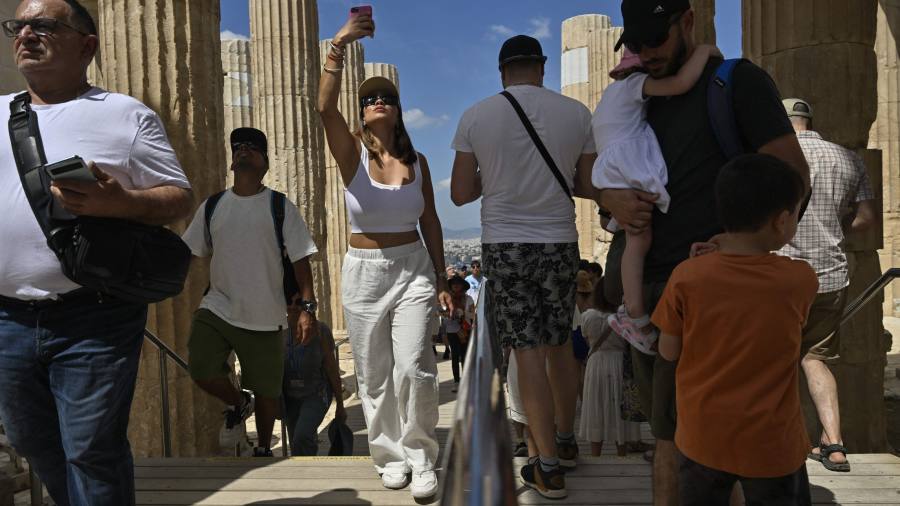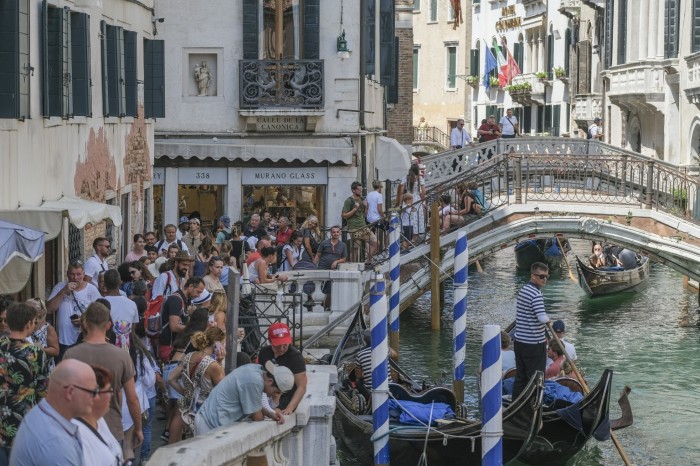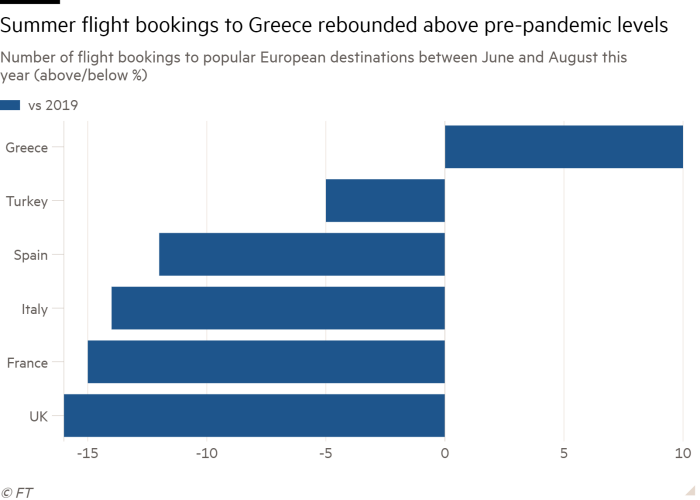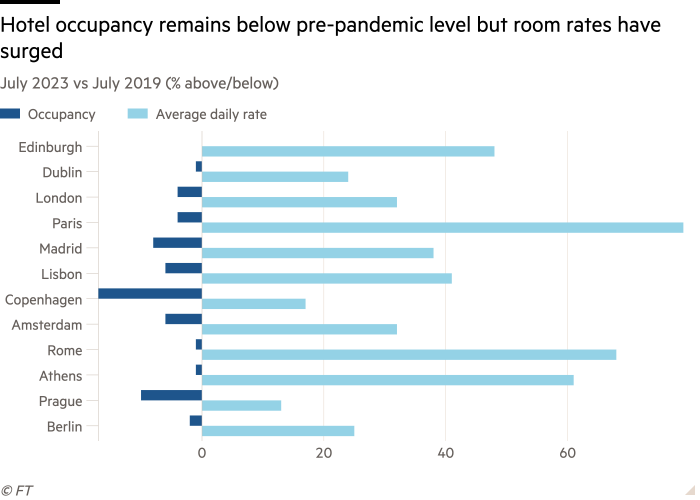
From two-hour queues at the Eiffel Tower in Paris to Athens capping visitors to the overcrowded Acropolis, the glut of tourists returning to Europe this summer has been difficult to miss.
Despite a spike in prices, flight bookings to northern Europe from June to August were up 25 per cent against a year earlier, according to data aggregator ForwardKeys, and up 13 per cent to southern Europe.
Hotel occupancy across the continent in July was just 4 per cent below pre-pandemic levels for the same month in 2019, according to industry data provider STR, defying a surge in average daily room rates in hotspots such as Paris, where they were 79 per cent higher in July this year than in 2019.
The region’s tourism industry has enjoyed its best summer season since before the pandemic as an increase in American visitors helped offset the impact of extreme heat and stubborn inflation.
France’s tourism minister Olivia Grégoire predicted last week that the world’s most visited country would benefit from a record €64bn-€67bn windfall from international tourism this year following a “very good” summer season.
Spain welcomed 47.6mn overseas visitors in the seven months to the end of July, according to national statistics bureau INE, 21 per cent ahead of the same period last year and just 0.8 per cent below 2019 levels.

Eduardo Santander, chief executive of the European Travel Commission, said that “despite the economic situation”, the region’s economies had been boosted by a “remarkable holiday season”.
Simon Vincent, president of Europe, the Middle East and Africa at hotel group Hilton, chalked up the success of the summer season to “the resilience of the consumer and the volume of Americans”, noting that “you can’t move for Americans in London at the moment”.
Barcelona is set to welcome 16 per cent more US visitors this year than in 2019, while London’s US visitor numbers are expected to be up by 13 per cent, according to projections by Oxford Economics. Total overnight tourist arrivals in the UK and Spain this year will rebound to pre-pandemic levels, according to the same projections.
In France, the greater spending power of US visitors was a big factor in the surge in tourism revenues. “This international clientele tends to consume high-end accommodation,” said Didier Arino, president of consultancy ProTourisme. “With the return of American customers and others from further afield, we will necessarily see an increase in revenue.”
Hotels and restaurants catering to higher-end travellers have performed particularly well. In sun-soaked Aix-en-Provence, restaurant and arts centre Hotel de Gallifet has been full all season.

“We’re lucky to be protected in that a lot of our visitors are not among those who are watching their purse strings,” said Kate Davis, general manager, noting that while visitors from the US, Australia and Asia were “happy to pay €30 for a glass of wine . . . if you do that for a French visitor, they would walk out”.
The sector’s strong year is not only down to international visitors. Operators say that while the pandemic boom in domestic travel fell back into a more normal pattern this year, the budgetary certainty offered by domestic holidays helped maintain high demand.
Tom Jenkins, chair of UK industry body Tourism Alliance, said holiday resorts in the UK remained full even though the staycation boom had “definitely faded”.
Emmanuel Marill, director for Europe, the Middle East and Africa at Airbnb, said there were some signs that “people with economic constraints preferred staycations”, adding that “when transportation costs rise as much as they have, that helps maintain demand for domestic trips”.
However, the increase in American tourists has made many domestic destinations unaffordable for some European families.
“We went camping in Austria for two weeks as it was a much cheaper option than a seaside holiday for our family of four,” said Gaia Quadri, a nursery school teacher who lives north of Milan.
Extreme heat across southern Europe and wildfires on the Greek island of Rhodes, which scorched 15 per cent of the land and led to nearly 20,000 evacuations, made headlines throughout summer but did little to dent demand for Europe’s sunnier climes.

Greece was the only major destination in Europe where total flight bookings between June and August were ahead of the same period in 2019, with summer bookings 10 per cent higher than in 2019, according to ForwardKeys.
In Italy, however, the hotter, southern part of the country recorded a drop in tourists, in contrast to cities such as Venice, Rome and Florence where there was an influx of international visitors.
There were 82mn hotel reservations in the country in August, 800,000 fewer than in the same month last year, according to industry association Assoturismo, a decline some experts attribute to the extreme weather.
The flow of foreign holidaymakers is also reigniting age-old debates around overtourism in some of Europe’s travel hotspots. Amsterdam’s city council last month banned cruise ships from the port, while Italian seaside resort Portofino threatened to fine tourists up to €270 for lingering in crowded spots to take selfies.
In Venice, the return of tourists has provided a boost to businesses but has proved a bitter pill for some locals forced to relocate elsewhere amid soaring prices, crowds and reduced access to housing as landlords look to rent out their homes to holidaymakers.
“Many people my age are moving elsewhere because life in this city is just very hard to sustain economically, socially and logistically,” said Giulia, 28, whose job is to stop tourists from sitting on steps on the streets around St Mark’s square.
Santander of the ETC said it was important to remember “that tourism success is not just about the number of travellers and money spent”, noting the return of old problems including “bottlenecks, a shortage of skilled staff, overcrowding and the subsequent adverse effects on local communities”.